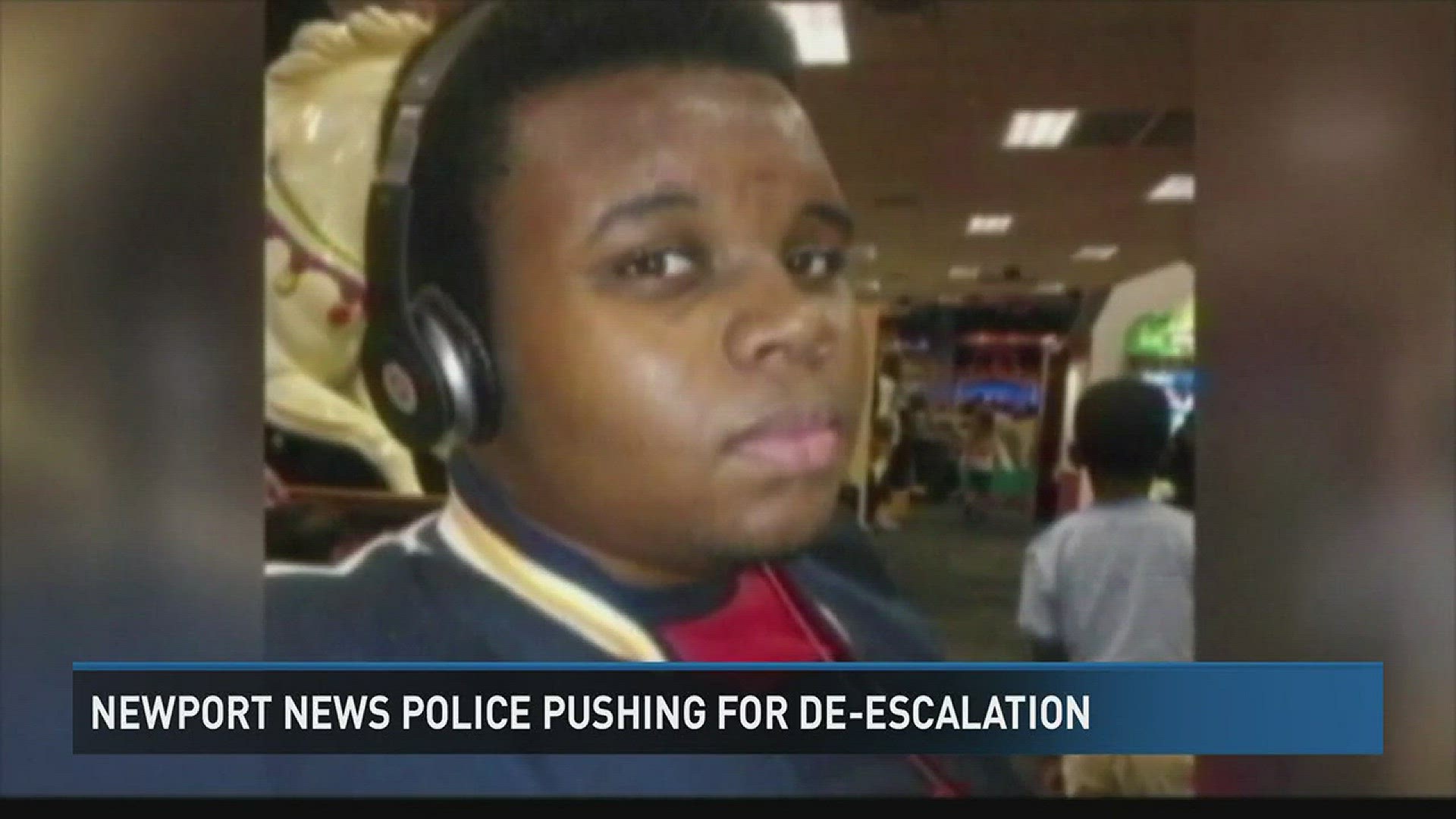NEWPORT NEWS, Va. (WVEC) - At a time when our nation is grappling with a heightened sense of fear of police -- magnified by events like the shooting of Michael Brown in Ferguson, Missouri -- there is a greater emphasis on de-escalation.
“I would define 'de-escalation' as an officer's opportunity to calm the situation down,” Sergeant Perry Bartels of the Newport News Police Department said.
Police departments across the country are now developing new use-of-force policies and training officers to use de-escalation tactics.
“There are likely some agencies around the country that might not even have any established policies. When they go out and engage in these contacts and something happens because it’s part not of their established culture, now they’re being told they have to implement this training,” Bartels said.
Newport News police have been training officers to use de-escalation tactics for years. Last year, a Newport News man called a help hotline saying he might hurt himself or anyone who comes near him. Officers were able to de-escalate the situation by talking him down; they took him into custody without anyone getting hurt.
“In some situations that officers engage in, on the onset, they probably take a little more time nowadays to kind of explain that. ‘We're here to help you.’ They probably take a little more time to get that across than we had to 10, 20 years ago,” Captain Jason Bollhorst said.
A recent letter Newport News Police Chief Richard Myers wrote to his department calls for a greater emphasis on this approach. Sergeant Bartels says it’s effective when there is an opportunity for it to work.
“The officer's actions are based on the suspect’s actions, generally, so the question is ultimately whether the suspect is going to comply,” he said.
Bartels says in no way does it mean officers are going to use less force altogether.
“We will use as little force as the suspect allows us to use.”
The obstacle is getting people to cooperate and trust that police are there to help and keep everyone safe. Bartels and Bollhorst say turning fear into trust takes time. Building that relationship takes commitment.
“We need their help. We're doing what we can, we really are. I believe that most of them know that. We can magnify our efforts if we continue to get more information,” Bartels said.

